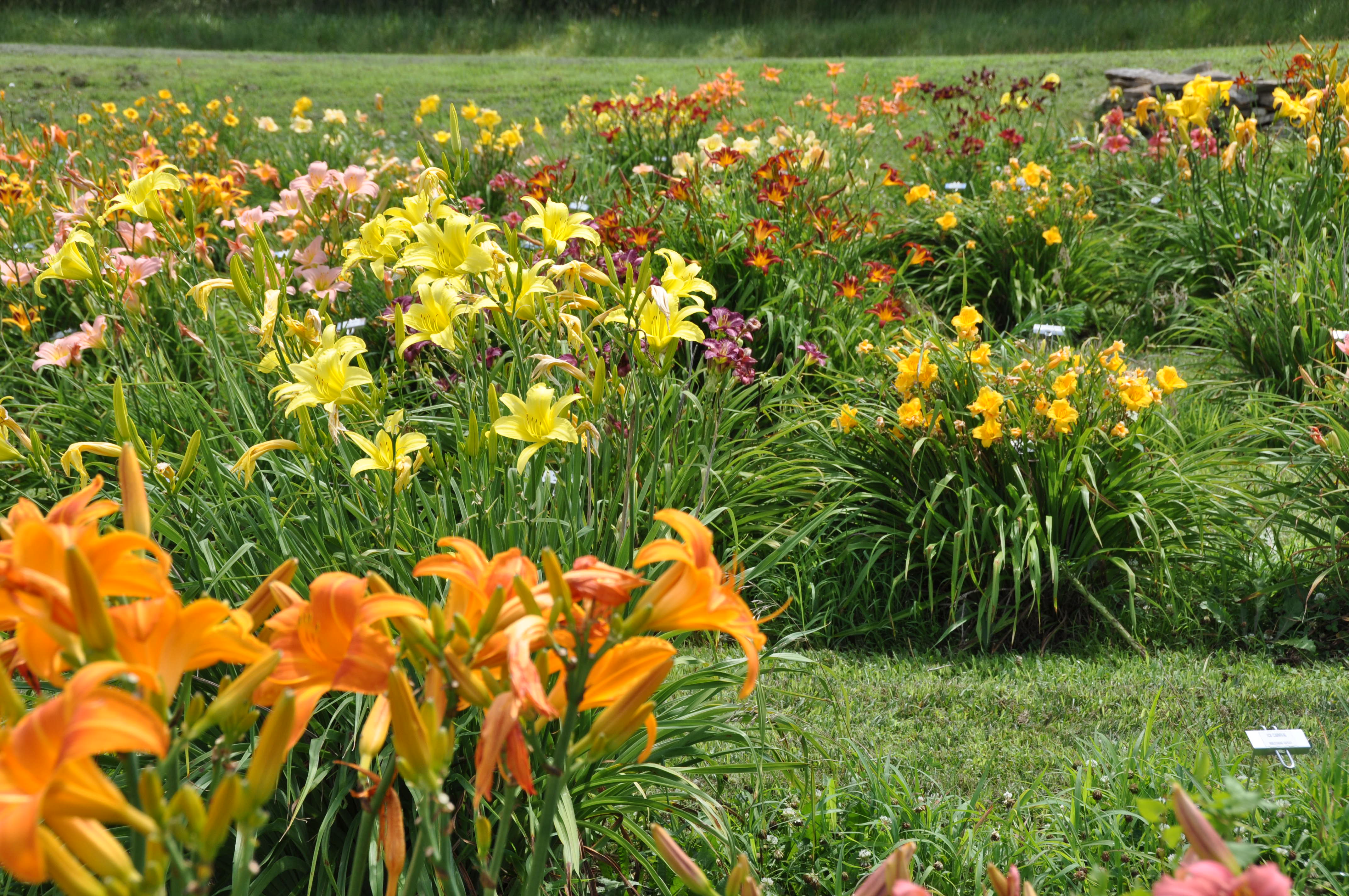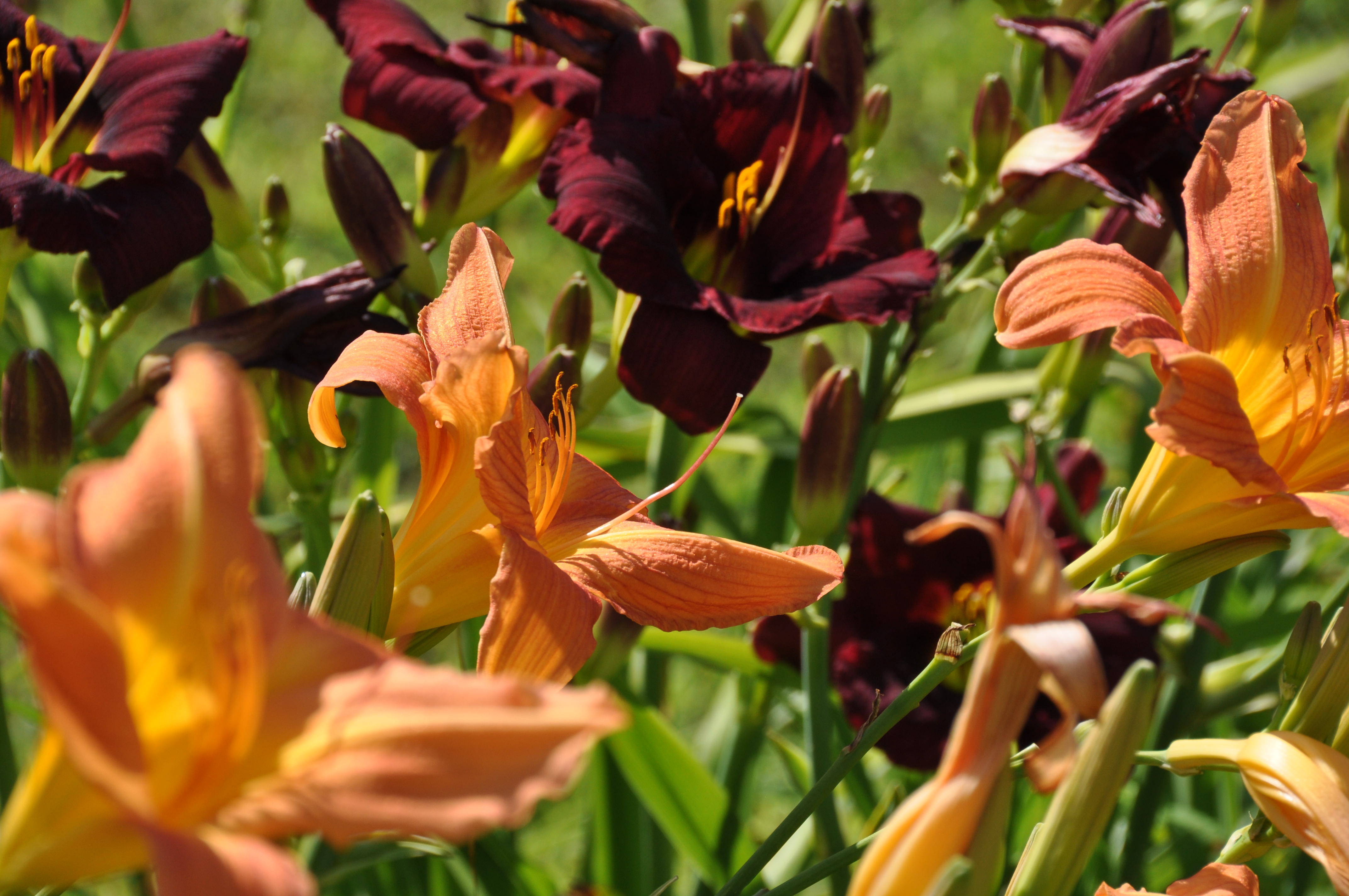By Sandra Nelson
Daylilies
An almost perfect perennial for the Midwestern garden.
Don’t be fooled by their delicate appearance; daylilies are truly tough plants. They tolerate a variety of soil conditions from dry to wet and rich to rocky. They grow in full sun, partial sun and even shaded locations. They withstand drought, rarely succumb to insects or diseases and are hardy in a huge range of climate zones. Their blooms, ranging in size from under 3 inches to over 4 ½ inches in diameter, are even considered edible — unfortunately, especially by hungry deer.

Daylilies grow in clumps with root systems that are either fibrous or tuberous. Leaves called fans emerge first from the crown and are followed by stems (scapes) that support the bud-bearing branches. With over 84,000 cultivars available today, daylilies can be found in colors ranging from a delicate, cream shade of white to a rich, dynamic purple. They are found as solid colors, blends of colors, multicolored, dusted with color, banded by color or with eyes. The blooms may be single or double or spider (meaning that the length to width has a ratio of 4:1) in form. They can be flat, circular, triangular or star-shaped to name just a few. The petals can be smooth, or ribbed or even resemble a delicate crepe fabric. Each daylily blooms lasts only one day, but a single plant typically produces multiple stalks with multiple blossoms that open over a period of time. Since the bloom season for daylily cultivars can stretch from early spring to late fall, by choosing ones that have a variety of bloom times or ones that are rebloomers, daylily beds can be in full flower the entire season.
The almost perfect perennial is also almost perfect as a landscape element. Daylilies can be interspersed as accent plants in foundation plantings and mixed borders or massed in beds to serve as a focal point. Massed daylilies are effective ground covers, suppressing weeds, preventing soil erosion and covering hillsides too steep to mow. Daylilies work well as edging on pathways to gently remind walkers to stay on the path and smaller varieties do well in containers.
Zones: 3 – 10
Companion Plants:
Early spring bulbs that naturalize, such as daffodils, grape hyacinths and crocus, are great companion plants for daylilies. When the bulbs’ leaves begins to fade, the new, fresh leaves of the daylilies distract the eyes and serve as an attractive cover to the dying foliage. Since tulips and hyacinths need to be dug and replaced every few years, they are not usually recommended as companion plants to daylillies..






